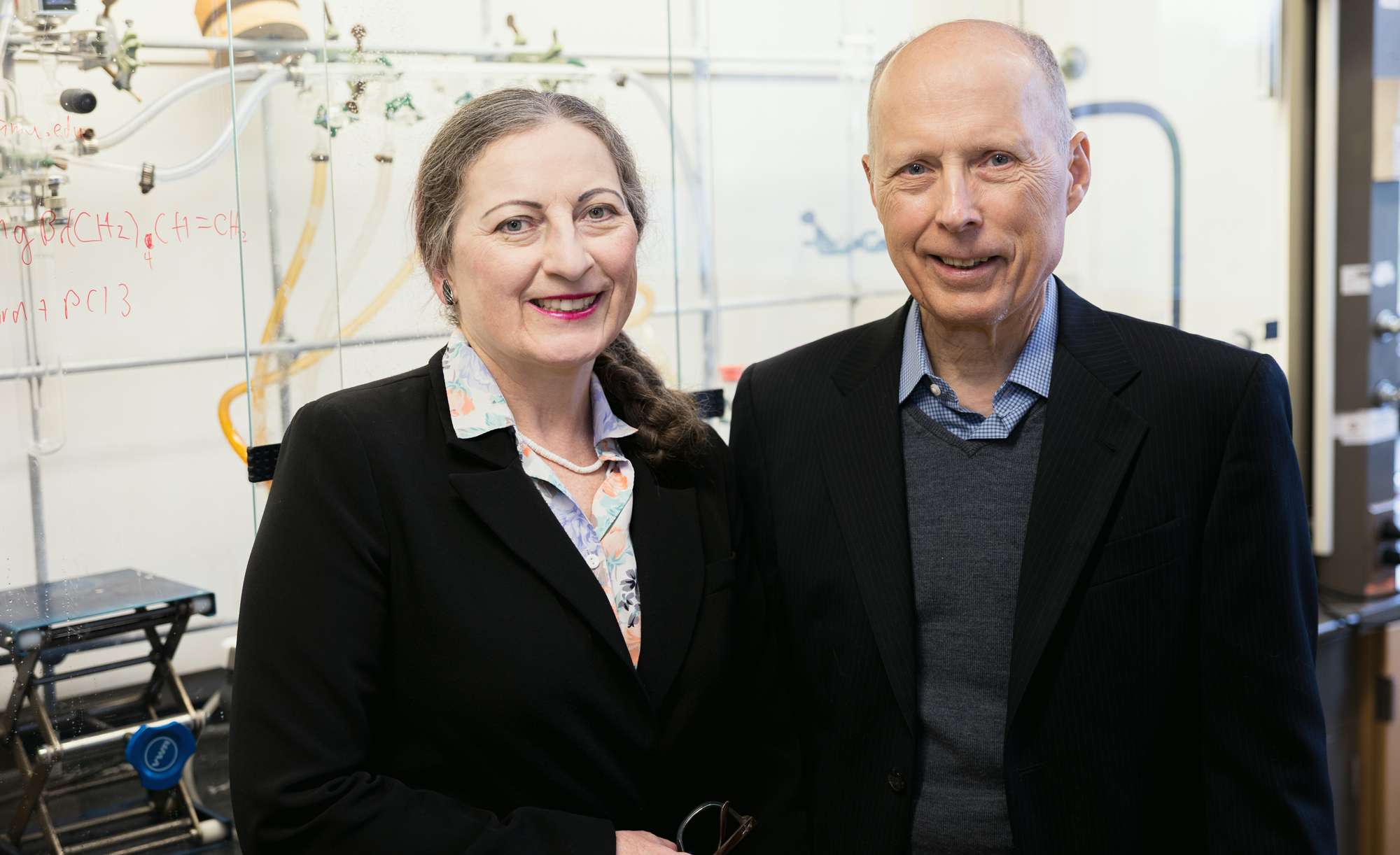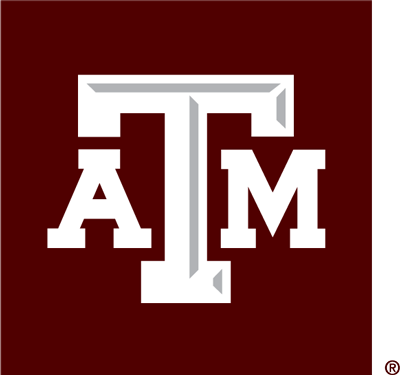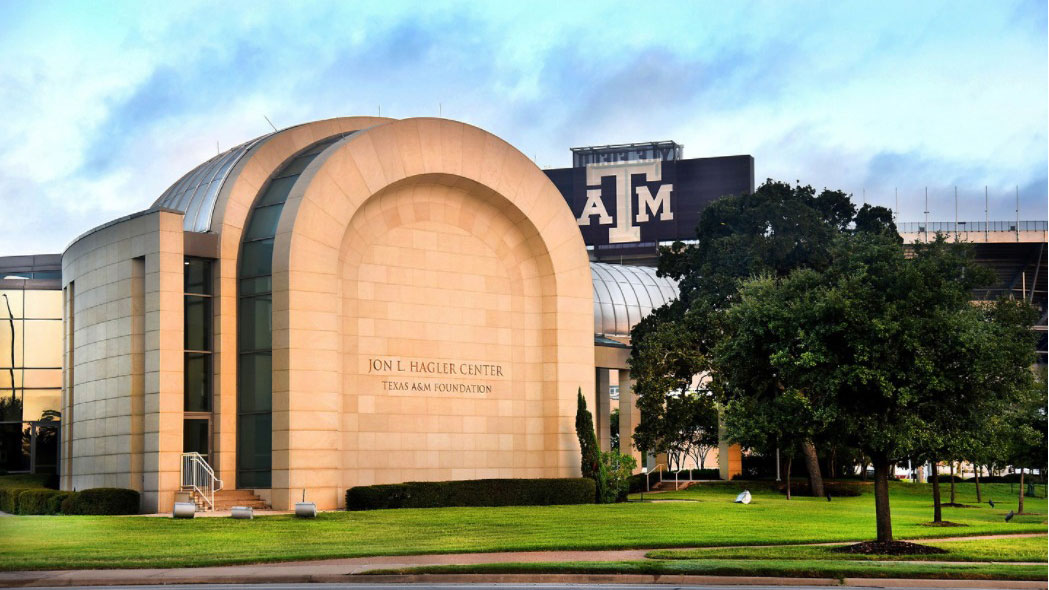
Texas A&M University Chemistry Professors Dr. John Gladysz and Dr. Janet Bluemel have always been committed to lifelong learning and mentorship. As experts in the fields of organometallic and materials chemistry, they have spent their careers advancing education in these areas around the world and sharing their knowledge with peers and students alike.
To relieve the financial burden that comes with many graduate degrees, Gladysz and Bluemel made a $1.5 million gift to the Chemistry Research Support Fund to support undergraduate, graduate and postdoctoral students who work and study in both of their research labs. The gift will also honor Gladysz’s parents, the late Edward Matthew Gladysz and Margean Alice Worst Gladysz, whose names will be recognized on the second and third floors of the Instructional Laboratory & Innovative Learning Building.
Fueling Discovery Through Quality Education
Gladysz and Bluemel met in 1996 at the ETH Zurich in Switzerland, where they were invited to present their respective research works and were taken out to dinner together. Soon after, the two reengaged at the Technical University of Munich, where Gladysz was a Humboldt scholar, and Bluemel an assistant professor.
After getting married in 1997, the couple’s continued pursuit of chemistry research and teaching took them around the world, initially to appointments at the University of Heidelberg and the University of Erlangen-Nuremberg in Germany. Following an earlier joint visit, in 2007 they found a common educational environment supportive of their research interests in the Department of Chemistry at Texas A&M.
Since then, the couple has prioritized student development through the operation of The Gladysz Research Group and The Bluemel Research Group. Students in each lab have made invaluable discoveries in chemistry, with diverse applications in many fields.
“The buzz word for my research is organometallic chemistry—the chemistry of metals with some form of carbon,” Gladysz said. “This area of research impacts the broad field of catalysis, which plays a role in everything from drug synthesis and batteries, to refining oil into gasoline, building nanoscopic devices and so much more.”
Bluemel’s research focus lies within materials chemistry, which includes both organic and organometallic synthesis. In her research lab, students use advanced techniques such as solid-state nuclear magnetic resonance spectroscopy, which allows closer investigations into the surfaces of materials and their reactions. Her multidisciplinary research approach has led to collaborations with multiple industries, currently with Albemarle.
Recently, Bluemel’s research discoveries led to a collaboration with Lynntech Inc., a technology development company based in Bryan-College Station that is focused on advancing early-stage scientific research into fully developed products.
Bluemel’s lab created filter materials that successfully remove and kill airborne pathogens like bacteria, fungus spores and viruses, including those that cause COVID-19. Phosphine oxides synthesized in Bluemel’s lab act as stabilizers for the active ingredients of these filters, which can improve air quality in healthcare, pharmaceutical and industrial environments.
Graduate Students Find Confidence, Purpose and Professional Success
Gladysz and Bluemel’s influence as educators extends far beyond the chemistry lab as they equip their students with valuable life and interpersonal skills.
Arturo Perez, a chemistry graduate student and member of The Gladysz Research Group, worked closely with Bluemel as a participant in the Research for Undergraduates Summer Program in 2022. He described his experiences with both professors as personally and professionally uplifting.
“Both Dr. Gladysz and Dr. Bluemel have helped me develop a wide range of valuable skills,” Perez said. “I’ve become a better teacher and communicator, which has enhanced my ability to explain complex concepts clearly. My research skills have improved, particularly in areas like adaptability, critical thinking and problem solving.”
John Hoefler ’24 worked closely with Bluemel as one of her Ph.D. students, where the two developed a new method to synthesize phosphine oxide molecules, a project that has direct applications in several fields, including catalysis and energy storage.
We would like to leave behind some of the best endowed faculty chairs in the country with the potential to attract outstanding teachers and scientists from around the world to the Department of Chemistry.
“This project represents a culmination of various aspects of organic, materials and analytical chemistry and is an immensely valuable discovery for the easy and inexpensive synthesis of phosphine oxides,” Hoefler said. “It was extremely rewarding to work on and publish a project with a specific and useful application.”
Working with Bluemel equipped Hoefler with skills that set him apart as a chemist and allowed him to form connections with other academics that led to his current job as a senior scientist at L’Oreal.
“Dr. Bluemel was an exceptional advisor,” Hoefler said. “When I first joined the lab, she was very patient and fostered an environment where I was free to learn without fear of making mistakes. As I progressed in my studies and became more independent in the lab, she was extremely supportive of my projects.”
Gladysz and Bluemel encourage innovative thinking that leads to noteworthy research achievements. For example, Gladysz and his research team are developing a class of molecules that can turn themselves inside-out, like many articles of clothing. Similarly to reversible jackets that can switch between two different colors or water-repellant properties, this allows similar bifunctionality to be programmed into molecules.
“Few chemists have even recognized that certain types of molecules can turn themselves inside out,” Gladysz said. “I have a proposal pending with the Department of Energy on how we can use this property to remediate nuclear waste, specifically certain radionuclides that are contaminating sites in the United States.”
Gladysz shared that his passion for mentorship comes from a genuine desire to help his students lead fulfilling lives, regardless of their professional direction or achievements.
“What makes you feel good as an academic is whether your former students have good lives and if the things that you taught them helped with that,” Gladysz said. “I place particular value on the development of writing, graphical and presentation skills. Of course, it’s nice when your students are professionally successful and/or recognized, but at the end of the day the important part is what you create in people, and what they can pass on to future generations.”
A Lasting Contribution to the Aggie Chemistry Community
Working with students opened the couple’s eyes to the financial burden that accompanies a graduate education. To help ease that burden, their gift will provide funding to enable students to focus solely on their education and research—without the need to take on outside work.
“We partnered with the Texas A&M Foundation to structure our gift in a flexible way to ensure that it promotes graduate and postdoctoral research in the Department of Chemistry,” Gladysz said. “It will provide direct support to the graduate students who work in our labs, who so often must hold distracting campus or off-site jobs that can interfere with the demands of their laboratory research.”
Always looking ahead, Gladysz and Bluemel are committed to making a lasting contribution to the Aggie chemistry community. Along with their ongoing support for students, they are also working toward bolstering the chemistry faculty by funding additional endowed gifts.
“We would like to leave behind some of the best endowed faculty chairs in the country with the potential to attract outstanding teachers and scientists from around the world to the Department of Chemistry,” Gladysz said. “They will choose Texas A&M in part because they would have resources that couldn’t be matched elsewhere and are independent of external political forces. That’s the second leg of the legacy we plan to leave behind.”

